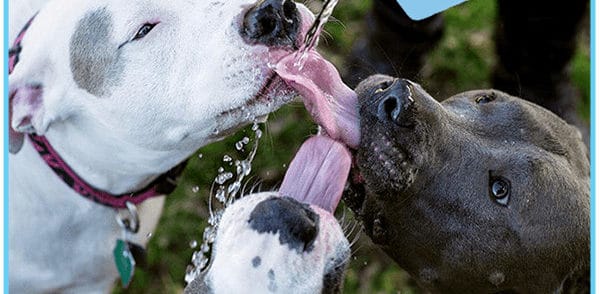Sweaty Doggies
Doggie does not sweat like us humans. They release some moisture from their foot pads and some of the less haired areas like arm pits and inner thighs. Doggie will promote radiant heat release, however most Doggie cooling is by panting, which is in the form of water vapor going in and out of the Doggie. You may see water coming off their tongues. If Doggie’s tongue is hanging to one side, give them water or some DoggieWater
This water vapor is just water, no electrolytes (sodium, chloride, potassium). The kidneys in Doggie conserve water to try and maintain a basic hydration, but water loss will continue. Fluid replacement is therefore also ‘just’ water, and now DoggieWater with electrolytes and needed vitamins. Additional electrolytes in the liquid, unneeded by the body for cooling, are eliminated through the back door.
Some concern can be when simple dehydration continues into overheating and possibly heat stroke. Maintaining hydration is one very important aspect to prevent more serious heat related problems. Also cooling (shade, wet down coat) and relax periods, add to Doggie health and increase ability to prevent some heat related issues.
Working dogs are high energy, and often do not drink adequately. Water consumption may be increased by the signals they get from their handlers, more work, leads to more energy and more absorption of water in Doggie’s system. Working dogs do not drink enough. DoggieWater is a great way to get more active dogs to increase water intake. Doggie’s kidneys will take care of excess.
Some pet owners prefer fluids to be given under their dogs’ skin , try that exercise at the park… no way… DoggieWater is easier! DoggieWater electrolytes and vitamins will be absorbed but will not meet all the hydration needs of doggie. Remember one once of water for each pound of Doggie weight. Doggie still need to drink, especially in the heat but also during cold weather.
Maintenance fluids for Doggie is 2-4 ml/kg/day, about 3 liters for an 80-90 lb. dog per day. Then additional needs are added for the time worked, and weather, both hot or cold. This may increase the needed amount by 25%, 50%, 75%, or even doubled!




